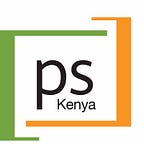Unwavering faith against a terrain of raging waters, this is what it takes to prevent malaria in Mfangano Island, located in the Western part of Kenya, Homa Bay County. It is one of the wards in Mbita Sub County with a population of a little over 100,000 people and is served by 10 health facilities all providing Long Lasting Insecticidal Nets to target clients.
Malaria positivity rate in Mfangano Island is extremely high. As per DHIS2 data available in 2017–2018 period the positivity rate was 50% down from 54% for the period 2016–2017 which makes it an important area for malaria interventions.
This ward has four islands including, Remba, Mfangano, Takawiri and Ringiti. Access to the island is mainly by motorized passenger boats. Mfangano Island is host to 7 out of the 10 facilities off the mainland and is characterised by extremely harsh terrains and a poor road-network which is mostly rocky. The only access to the island is by use of either passenger boats or luggage boats for those who have cargo. The cargo boats are available at fixed times. This considerably determines the planning of the visit to the island facilities. The safety of travellers is also threatened since passenger boats are usually smaller and are prone to being destabilized by the strong waves.
Arrangements for the gruelling Sunday trip involved nets being transported to Mbita sub-county hospital which is nearer to the lakeshore to allow adequate time for loading and balancing the boat for stability and ensure an early start on Monday as per the coxswain’s advice.
On this day, loading of the boat started at around 5.30am, extra fuel was also carried in jerricans to ensure a supply for five days trip as there would be no gas refill stations on the island. While loading the nets passengers arriving at the mainland aboard the earliest boats were excited on learning that nets were being transported to their facilities, “Thank you for remembering our people in this area, not many remember to provide such important health products especially to fight Malaria which is problem to our people,” shouted one of the travellers, as he disembarked. “Malaria is a big challenge here, especially because of difficulty in accessing hospitals, but with nets we can protect ourselves,” he continued.
We set out from the mainland at about 7am with the aim of distributing the nets to all facilities including those in the furthest islands such as Remba dispensary. There is a delay after the team realizes that not only are the safety jackets on the boat few, the sizes do not fit all. We solve this on the next beach we arrive at and it takes us about 3 hours of braving the rough waters to reach our first destination, Ugina health centre.
At the facility, we inquire on the low consumption of services seeking to understand community challenges in seeking medical attention. “There is compromised health seeking behaviour due to presence of traditional healers on the island. People only end up in the facility for care when their situation has worsened,” explains the facility in charge Ms. Mahalath Nyatol.
She believes the strong belief in the traditional healers over communication by community health workers has significantly contributed to high cases of Malaria. She however notes that the supplies the facility receives are adequate to meet a whole year’s needs and this has helped greatly in lowering Malaria incidences.
“Service delivery on the island facilities are further faced with the challenge of staff shortage, there are only two diagnostic laboratories on the island which means most cases are clinically treated.” Mr John Odhuno who is the Malaria control coordinator explains. He further says that with transport challenges, the facilities tend to have erratic supply of other commodities such as Malaria diagnostics.
Of the 7 community units in the island only 2 are partner supported with stipends which has greatly minimized community involvement in health services uptake. LLIN distribution has in a great way motivated mothers to come for skilled delivery in the facilities despite the influence of traditional healers, especially because the mothers know who is eligible, they tend to encourage their peers who are expecting to visit health facilities to benefit from the free nets.
On the second day we set out as early as 5 am to the next health facility. Visiting facilities is a strain because of the terrain, but we are determined to deliver nets to Sara. After 5 days, we manage to deliver and redistribute nets and malaria commodities achieving our objective of distributing 2,200 nets. We are happy that against the tide, the mothers and children of Mfangano Ward in Mbita Sub County have the opportunity to access and utilise LLINS in prevention against Malaria.
